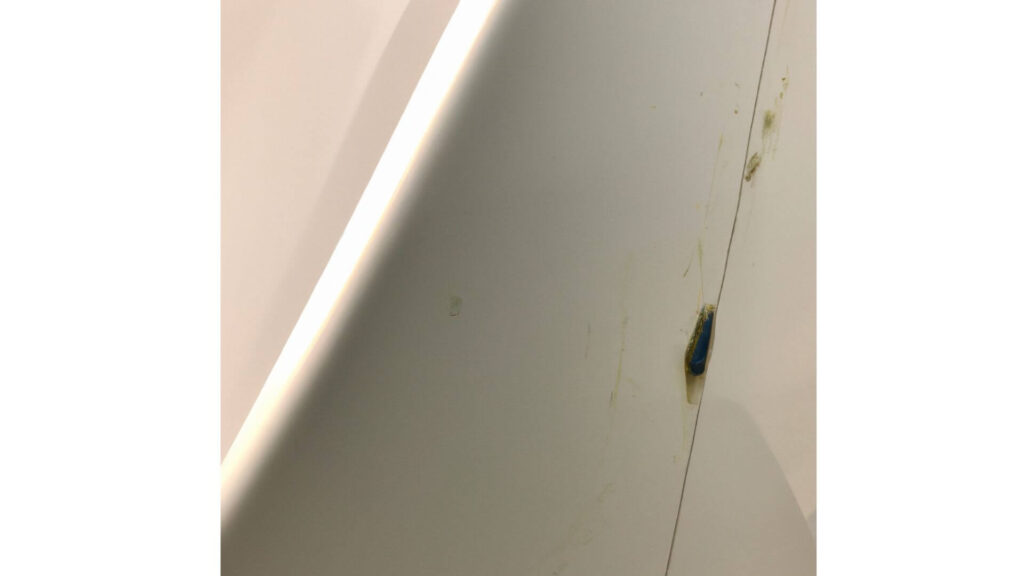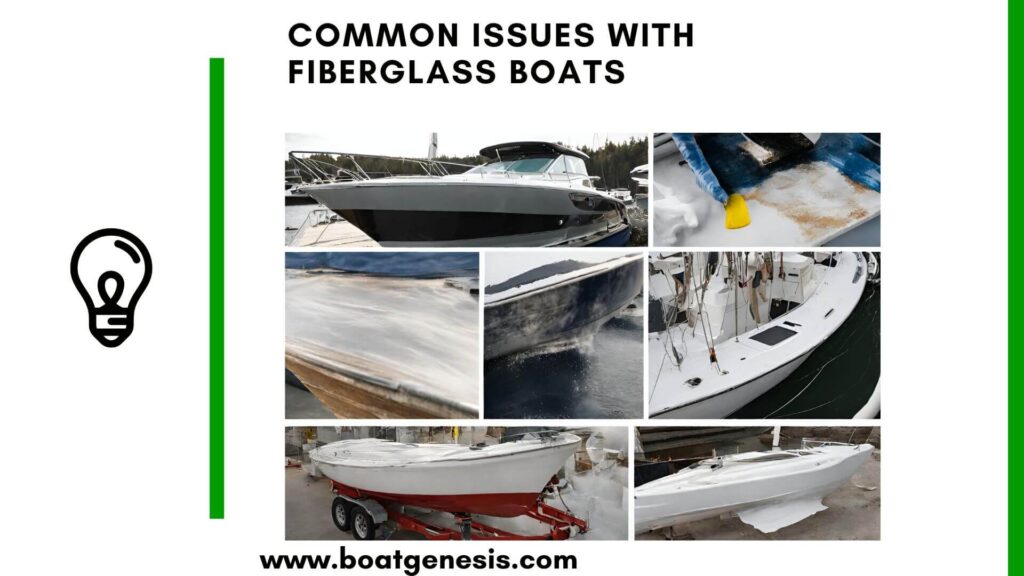If you’re the proud owner of a sleek fiberglass boat, you know the joy of cutting through the waves with ease. But as with any great vessel, there’s a need for regular upkeep to keep it shipshape.
Today, we’re diving deep into the common issues that fiberglass boats face and how you can tackle them head-on.
So, let’s get started.
- Common Issues With Fiberglass Boats
- 1. Blisters: The Pox of the Sea
- 2. Delamination: When Layers Decide to Split
- 3. Warping: When the Heat is Too Much to Handle
- 4. Gelcoat Oxidation: The Fade that Dulls Your Shine
- 5. Stress Cracks: Signs of a Hard Life at Sea
- 6. Spider Cracks: The Creepy-Crawlies of Boat Damage
- 7. Corrosion: The Rusty Scourge of the Seas
- Routine Checks: Your First Mate in Maintenance
- Professional Help
- Final Thoughts
Common Issues With Fiberglass Boats
1. Blisters: The Pox of the Sea

First off, let’s talk about the dreaded blisters.
These pesky problems are like the acne of the boating world – unsightly and annoying! Blisters occur when water finds its way into the microscopic cracks of the gelcoat, the outermost layer of your boat’s hull.
Over time, this trapped moisture can lead to the formation of small, raised areas that resemble—you guessed it—blisters.
If left unchecked, these can lead to more significant damage, so it’s crucial to keep an eye out and address them promptly.
==>> Also read: How to fix blisters in gelcoat?
2. Delamination: When Layers Decide to Split

Another challenge you might encounter is delamination.
Think of your boat’s hull like a delicious layered cake. Delamination is when those layers decide they’ve had enough of each other and start to separate.
This can compromise the structural integrity of your boat and is often caused by water intrusion or poor bonding during the manufacturing process.
It’s a tricky fix, but catching it early can save you a boatload of trouble. You can also have a look at MPT Autobody’s insights. Delamination is one of their top three common issues with fiberglass boats.
3. Warping: When the Heat is Too Much to Handle
Boats, like people, aren’t fans of extreme heat. Excessive exposure to the sun’s fiery rays can lead to warping.
This is when the plastic and foam materials within your boat’s fiberglass substrate decide to throw a bit of a tantrum and change shape.
It’s not a good look and can affect your boat’s performance.
To prevent this, make sure to provide ample shade for your vessel whenever possible, and consider using a protective cover or applying a UV-resistant wax to keep it cool and collected.
4. Gelcoat Oxidation: The Fade that Dulls Your Shine

Gelcoat oxidation is like watching the sun slowly set on the luster of your boat. It’s that chalky, dull finish that no skipper wants to see.
This happens when the gelcoat—the glossy outer surface of your fiberglass boat—starts to break down due to UV exposure and environmental elements.
It’s not just an aesthetic issue; it can also expose the underlying fiberglass to more damage.
Regular washing, waxing, and the use of quality marine polish can keep oxidation at bay and ensure your boat remains the belle of the ball—or, in this case, the sea.
==>> Also read: Removing oxidation on a fiberglass boat
5. Stress Cracks: Signs of a Hard Life at Sea
Stress cracks may sound like what you get after a tough day at work, but for boats, they’re small fractures in the gelcoat.
These can be caused by impact, flexing of the hull, or even a manufacturing defect.
While they may not scream “emergency,” they’re like the early warnings on a pirate’s treasure map: ignore them at your peril.
Addressing stress cracks early can prevent them from growing into a full-blown hull breach.
==>> See how to fix gelcoat stress cracks here.
6. Spider Cracks: The Creepy-Crawlies of Boat Damage
Close cousins to stress cracks are spider cracks. These fine, web-like cracks can spread across your boat’s surface and are often a result of minor impacts or heavy wear and tear.
While they don’t pose an immediate threat to your boat’s structural integrity, they can be unsightly and may signal underlying issues.
Keeping your boat’s weight properly distributed and avoiding harsh collisions can help prevent these miniature fissures.
7. Corrosion: The Rusty Scourge of the Seas
Lastly, let’s talk about corrosion. While fiberglass doesn’t rust like metal, the hardware on your boat certainly can.
Corrosion is the result of a chemical reaction between metal parts and the salty sea air or water. It can weaken vital components of your boat, leading to costly repairs.
Regular inspections and maintenance, along with the use of corrosion-resistant materials, can help keep the scourge at bay.
So there you have it, the common issues with fiberglass boats and how you can outmaneuver them.
Remember, regular maintenance is the key to a long and happy life at sea.
Routine Checks: Your First Mate in Maintenance
Think of routine checks as your trusty first mate in the battle against wear and tear.
Make it a habit to inspect your boat thoroughly before and after each voyage.
Look for any signs of the issues we’ve discussed, from blisters to cracks, and tackle them before they escalate.
Keep a maintenance log to track any changes or repairs—it’ll be a lifesaver when it comes to diagnosing problems down the line.
Professional Help
Sometimes, despite your best efforts, you’ll need to call in the cavalry. Don’t be afraid to seek professional help for complex repairs.
A skilled technician can offer solutions that might not be available to the average boat owner.
They can also provide valuable advice on preventative measures and the best products to use for your specific situation.
Final Thoughts
Owning a fiberglass boat is a rewarding experience that comes with its own set of challenges.
So, if you understand the common issues these vessels face, you can chart a course for success and keep your boat in prime condition.
Whether you’re a seasoned sailor or a landlubber with sea legs, remember that the key to a smooth journey is in the care you give your ship.
I hope you gained value from this article.
Do not hesitate to leave a comment below if you have any questions.


